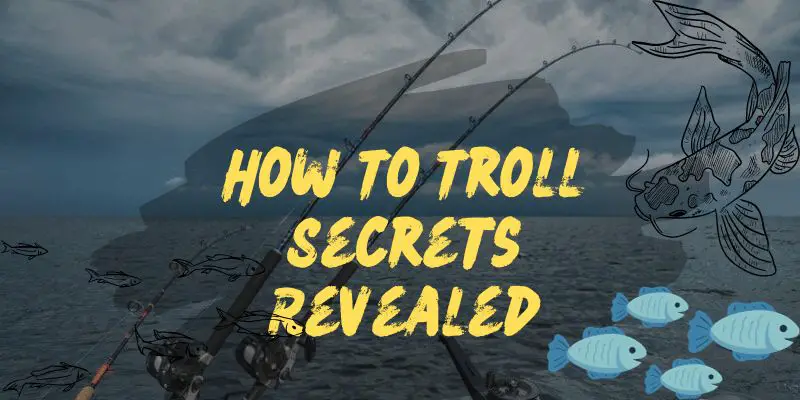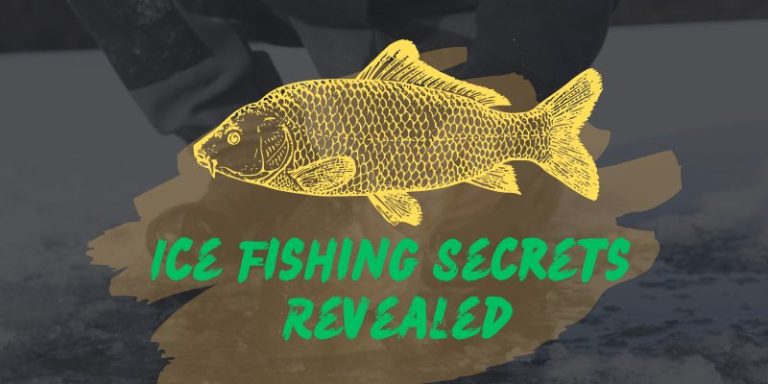Discover How to Troll Fish for Big Catches
Trolling fishing is an exciting and effective method used by anglers worldwide to catch a variety of fish species. It involves dragging bait or lures behind a moving boat to entice fish to bite. This technique allows anglers to cover a larger area of water and target actively feeding fish. In this article, we will Discover How to Troll Fish for Big Catches, essentials of trolling fishing, including equipment, techniques, bait selection, and best practices.

Trolling fishing offers anglers a versatile and thrilling approach to catching fish. By employing effective techniques and utilizing the right equipment, you can significantly increase your chances of success. This guide will provide you with valuable insights and tips to enhance your trolling fishing skills, whether you are a beginner or an experienced angler.
Equipment for Trolling Fishing
Before you embark on your trolling fishing adventure, it is crucial to gather the right equipment. Here are some essential items you’ll need:
Fishing Rod and Reel
Selecting the appropriate fishing rod and reel combination is essential for successful trolling fishing. Opt for a sturdy rod with a medium to heavy action and a length of 7 to 9 feet. This length provides the necessary leverage to handle potential trophy-sized catches. Pair your rod with a reel that has a robust drag system and a high line capacity to withstand the strain of trolling.
Fishing Line
Choosing the right fishing line is crucial as it needs to withstand the strain of trolling. Opt for a line with a higher pound test rating, such as monofilament or braided lines, known for their strength and durability. Regularly inspect your fishing line for any signs of wear and replace it as needed to prevent unexpected breakages.
Downriggers
Downriggers are invaluable tools for trolling fishing, especially in deeper waters. These devices allow you to control the depth at which your bait or lure is presented, increasing your chances of attracting fish. A typical downrigger system consists of a cable, weight, and release mechanism that enables you to precisely position your bait at different depths.
Planer Boards
Utilizing planer boards while trolling is highly beneficial as they help spread out your fishing lines and cover a wider area. These devices prevent tangling and allow you to present your baits or lures at varying distances from the boat. Planer boards are especially useful when targeting species like walleye or muskellunge.
Baits and Lures
Selecting the right bait or lure is vital for successful trolling fishing. Artificial lures, such as spoons, crankbaits, or soft plastics, are excellent choices as they imitate the movement of prey fish. Additionally, consider using live bait, such as minnows or nightcrawlers, for a more natural presentation. Experiment with different colors, sizes, and patterns to determine what works best for your target species.
When it comes to selecting equipment for trolling fishing, it’s important to invest in high-quality gear that can withstand the demands of this fishing technique. By having the right fishing rod, reel, line, downriggers, planer boards, and baits or lures, you’ll be well-prepared for a successful trolling fishing experience.
Techniques for Trolling Fishing | How to Troll Fish
Now that you have the necessary equipment, let’s explore some effective trolling fishing techniques:
Speed and Depth Control
Maintaining the right speed and depth is crucial in trolling fishing. The optimal trolling speed varies depending on the target species, water conditions, and the type of bait or lure used. Generally, a speed range of 2 to 4 miles per hour is a good starting point. However, it’s essential to experiment with different speeds to gauge the fish’s preference. Use downriggers or planer boards to adjust the depth at which your bait or lure is presented. Fish often have specific feeding zones, so varying your speed and depth can help you locate the fish.
Vary Your Trolling Patterns
Fish are often attracted to changes in bait presentation and movement. To increase your chances of a successful catch, vary your trolling patterns. Experiment with different distances between lures, adjust your boat’s speed, and incorporate sudden turns or stops. These variations can trigger a fish’s predatory instincts and entice them to strike. Pay attention to how fish respond to different trolling patterns and adapt accordingly.
Pay Attention to Structure and Cover
Fish tend to congregate near underwater structures, such as weed beds, drop-offs, or submerged rocks. Utilize your fish finder or depth sounder to identify these structures and troll around them. By doing so, you increase the likelihood of encountering fish in their preferred habitats. Additionally, keep an eye out for signs of baitfish activity, such as diving birds or jumping fish, as they indicate potential hotspots. Adjust your trolling routes accordingly to maximize your chances of success.
Mastering effective trolling fishing techniques is essential for consistently landing fish. By maintaining the right speed and depth, varying your trolling patterns, and paying attention to underwater structures and baitfish activity, you significantly increase your chances of enticing fish to bite.
Best Practices for Trolling Fishing
To maximize your trolling fishing success, consider the following best practices:
Research and Preparation
Before heading out, conduct thorough research on the targeted fish species. Understand their preferred habitats, feeding patterns, and seasonal behavior. This knowledge will help you select the right bait, trolling speed, and fishing locations. Additionally, consider weather conditions, time of day, and other factors that may affect fish behavior. By planning your fishing trip accordingly, you increase your chances of success.
Safety First
Safety should always be a top priority while trolling fishing. Ensure that everyone on board wears a properly fitting life jacket. Familiarize yourself with boating regulations, including speed limits and navigation rules. Inform someone on land about your fishing plans, including your intended fishing location and estimated return time. By adhering to safety measures, you can enjoy your fishing experience with peace of mind.
Patience and Persistence
Trolling fishing requires patience and persistence. Fish behavior can be unpredictable, and success may not come instantly. Be prepared to adapt your techniques and locations based on the fish’s behavior. Stay focused, maintain a positive attitude, and enjoy the experience, regardless of the catch. Remember, trolling fishing is as much about the process as it is about the outcome.
By following these best practices, you can enhance your trolling fishing skills and increase your chances of a successful outing. Researching and preparing for your trip, prioritizing safety, and maintaining patience and persistence are key factors in becoming a proficient trolling angler.
FAQ
What equipment do I need for trolling fishing?
Fishing Rod and Reel
Fishing Line
Downriggers
Planer Boards
Baits and Lures
How do I maintain the right speed and depth while trolling fishing?
Experiment with different speeds to gauge the fish’s preference.
Use downriggers or planer boards to adjust the depth of your bait or lure.
Vary your trolling patterns to trigger a fish’s predatory instincts.
How can I increase my chances of catching fish while trolling?
Pay attention to underwater structures and troll around them.
Vary your trolling patterns by adjusting distances between lures, boat speed, and incorporating sudden turns or stops.
Research the targeted fish species and understand their preferred habitats and feeding patterns.
What are some best practices for trolling fishing?
Conduct thorough research and preparation before heading out.
Prioritize safety by wearing life jackets, adhering to boating regulations, and informing someone on land about your fishing plans.
Practice patience, persistence, and enjoy the experience regardless of the catch.
Conclusion
Trolling fishing is a versatile and exciting method that opens up a world of opportunities for anglers. By understanding the right equipment, techniques, bait selection, and best practices, you can significantly enhance your trolling fishing skills. Remember to respect nature, follow local fishing regulations, and practice catch-and-release whenever possible. Now, go out there, enjoy the thrill of trolling fishing, and create unforgettable angling memories!






